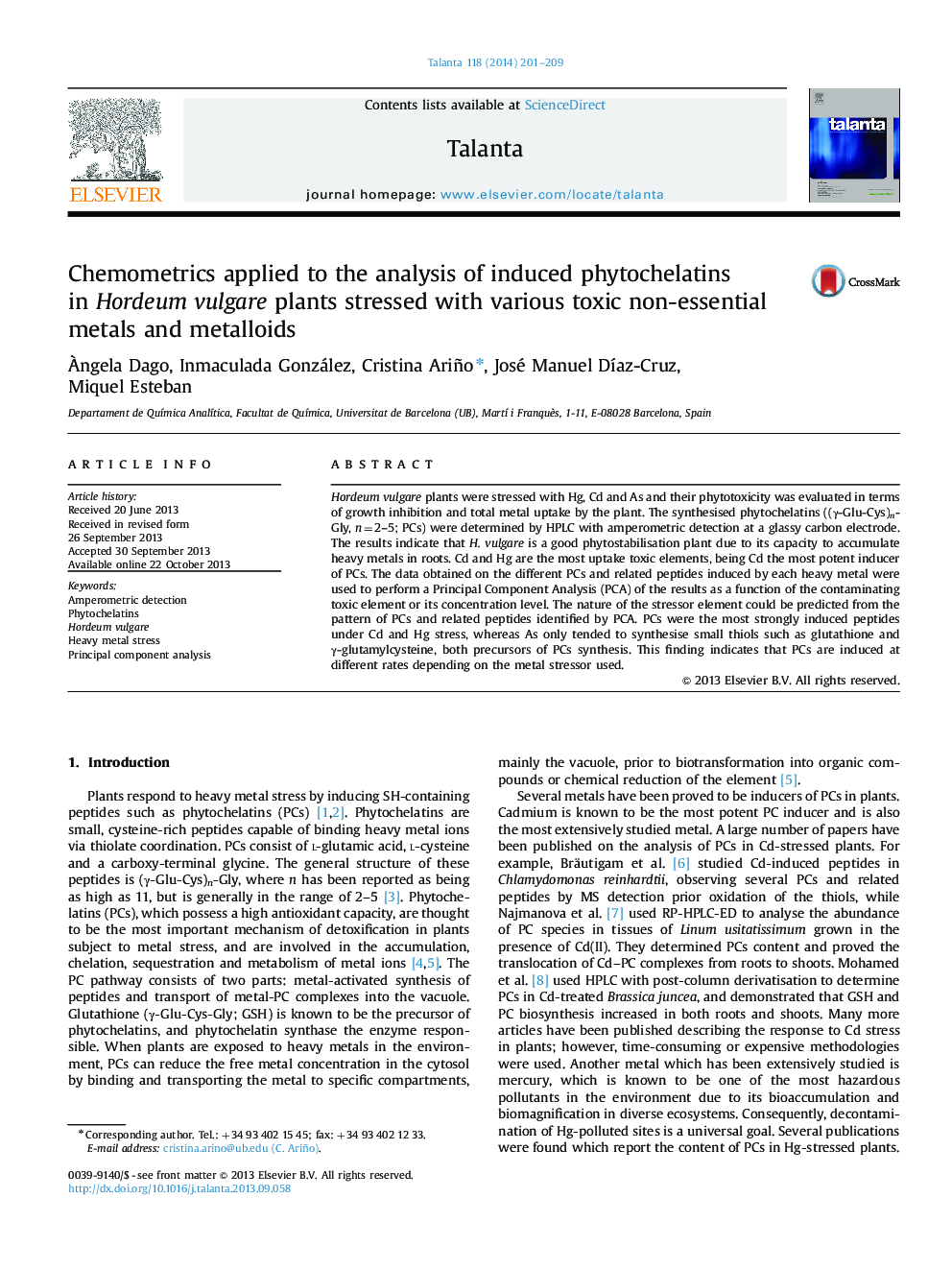| Article ID | Journal | Published Year | Pages | File Type |
|---|---|---|---|---|
| 1242108 | Talanta | 2014 | 9 Pages |
•Hordeum vulgare plants stressed with Hg, Cd and As are considered.•Induced phytochelatins are analysed by HPLC with amperometric detection.•Chemometrics tools are applied for the first time in phytoremediation studies.•Each heavy metal induces different phytochelatins depending on a pattern of synthesis.•Principal Component Analysis permits to predict the stressor element regarding thiols.
Hordeum vulgare plants were stressed with Hg, Cd and As and their phytotoxicity was evaluated in terms of growth inhibition and total metal uptake by the plant. The synthesised phytochelatins ((γ-Glu-Cys)n-Gly, n=2–5; PCs) were determined by HPLC with amperometric detection at a glassy carbon electrode. The results indicate that H. vulgare is a good phytostabilisation plant due to its capacity to accumulate heavy metals in roots. Cd and Hg are the most uptake toxic elements, being Cd the most potent inducer of PCs. The data obtained on the different PCs and related peptides induced by each heavy metal were used to perform a Principal Component Analysis (PCA) of the results as a function of the contaminating toxic element or its concentration level. The nature of the stressor element could be predicted from the pattern of PCs and related peptides identified by PCA. PCs were the most strongly induced peptides under Cd and Hg stress, whereas As only tended to synthesise small thiols such as glutathione and γ-glutamylcysteine, both precursors of PCs synthesis. This finding indicates that PCs are induced at different rates depending on the metal stressor used.
Graphical abstractFigure optionsDownload full-size imageDownload as PowerPoint slide
